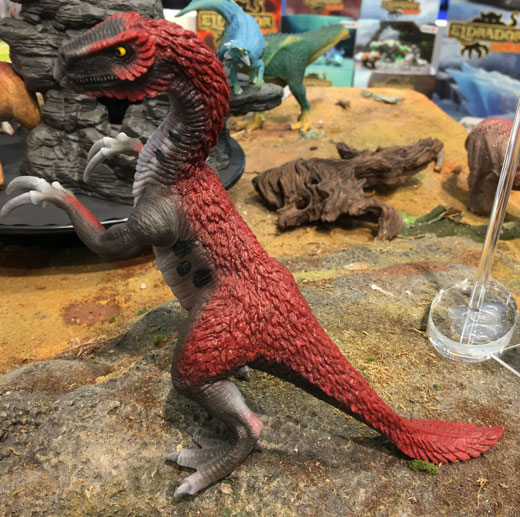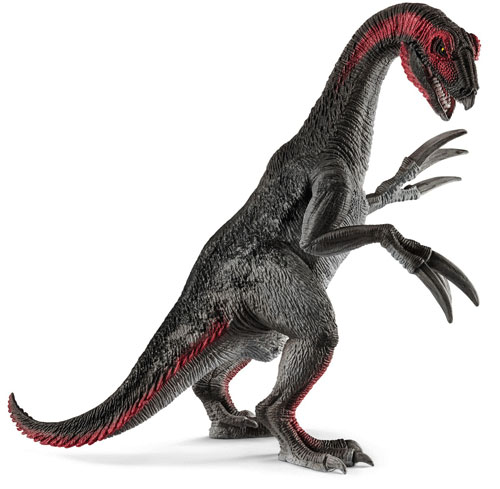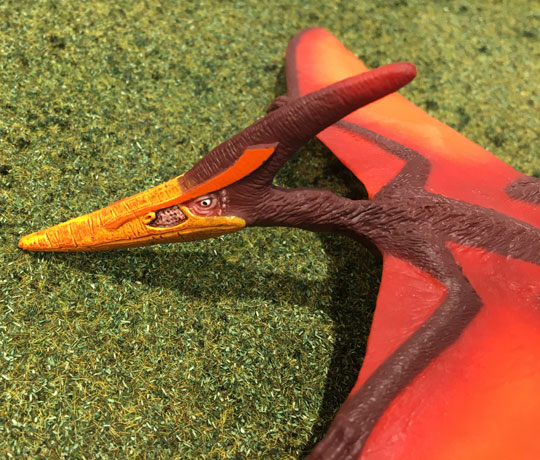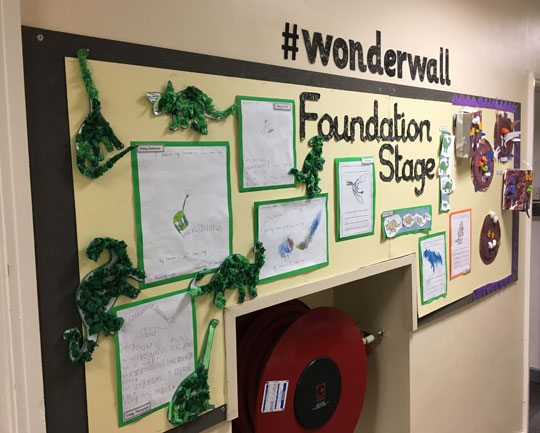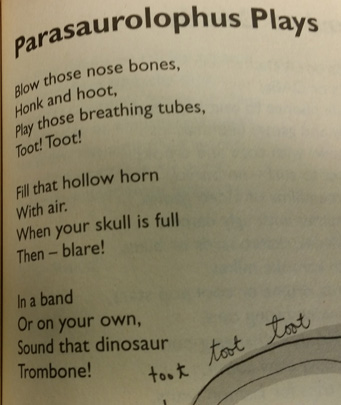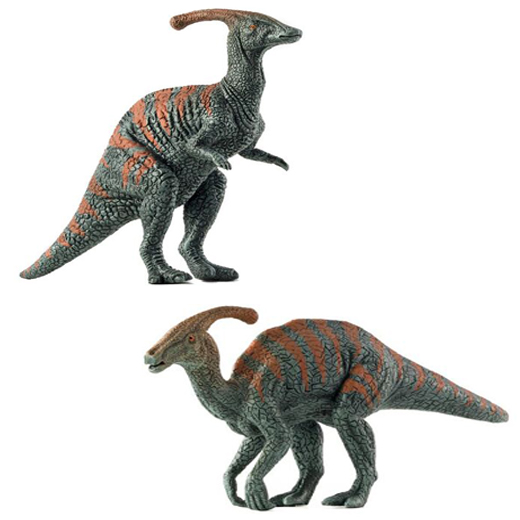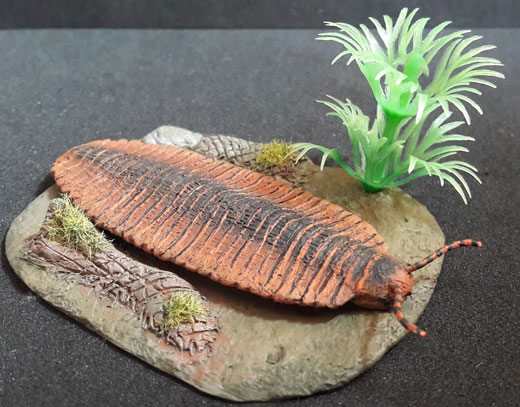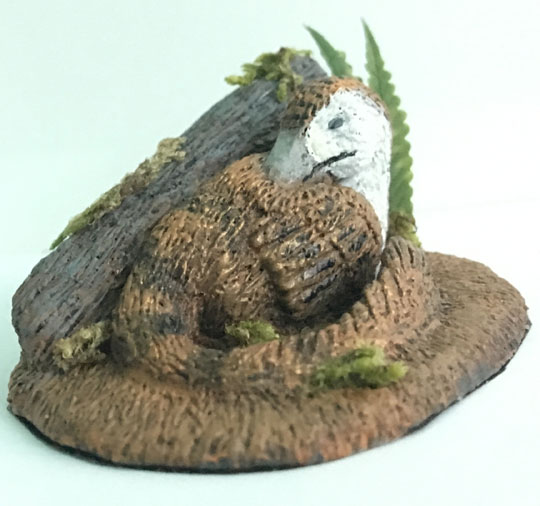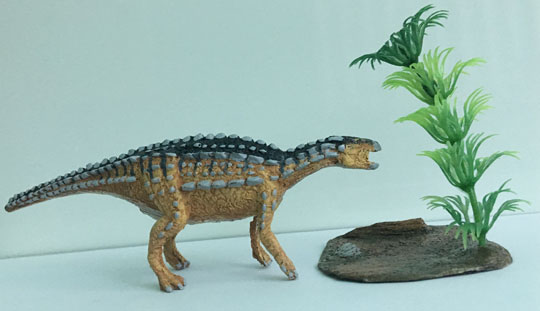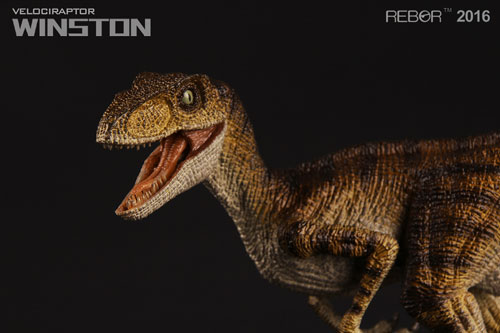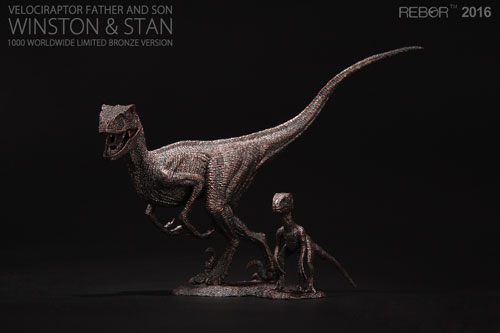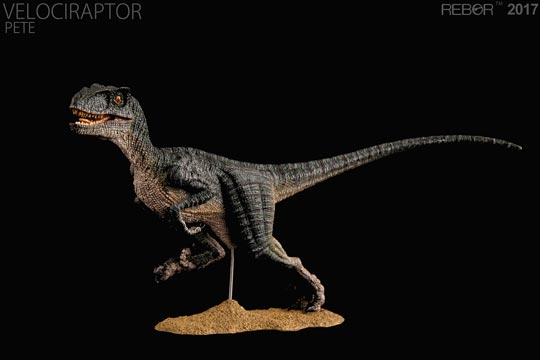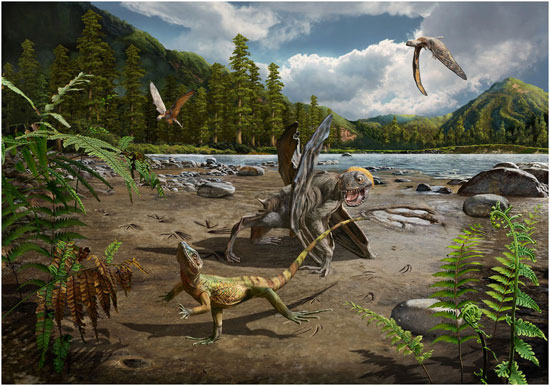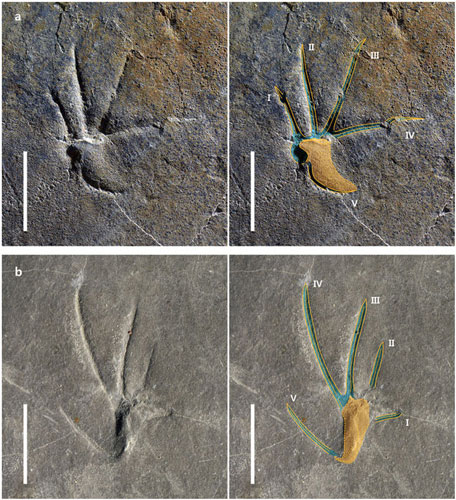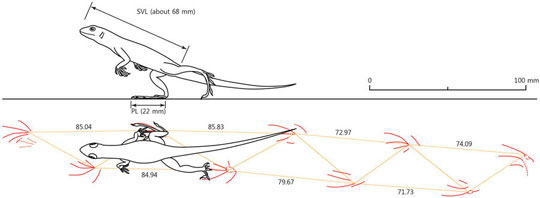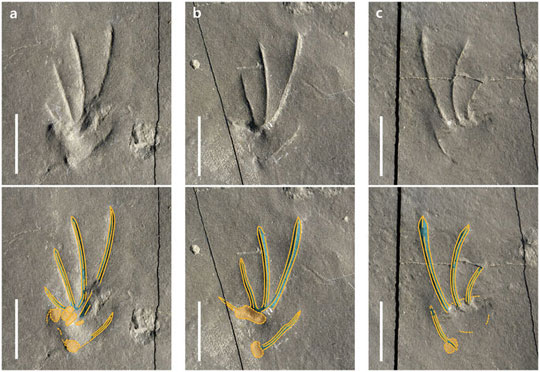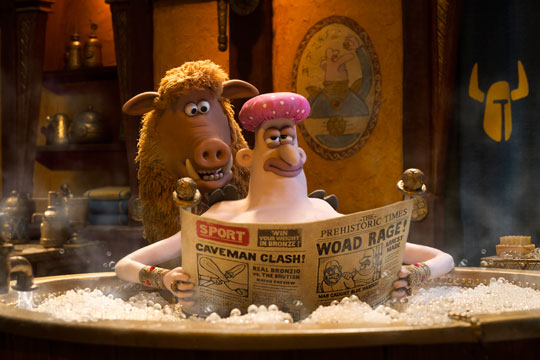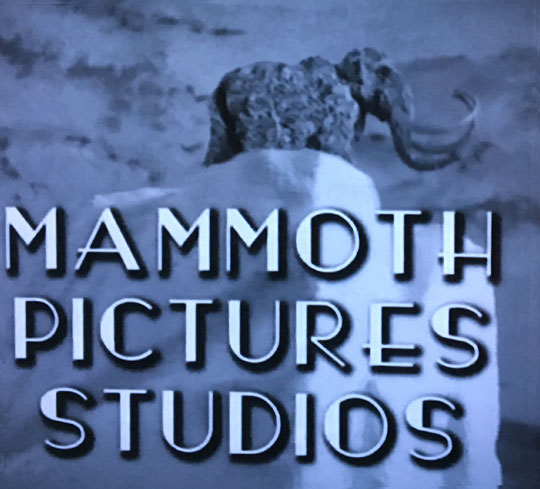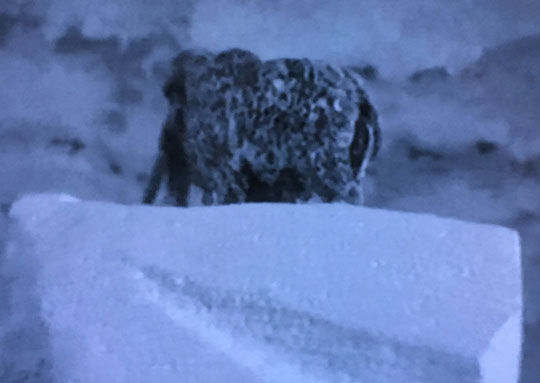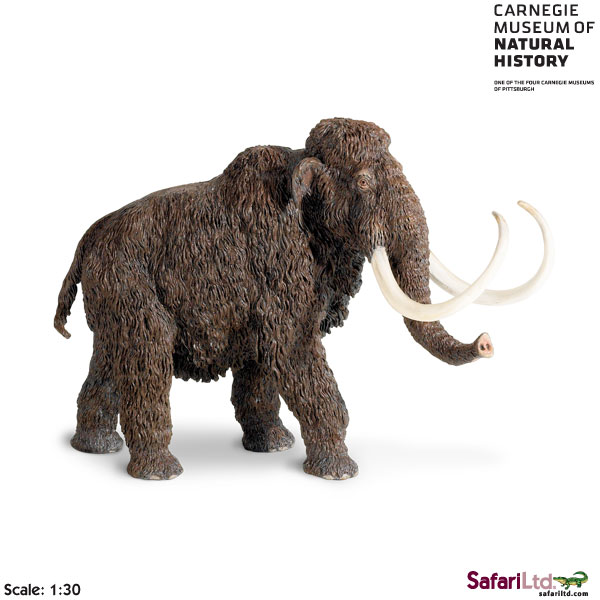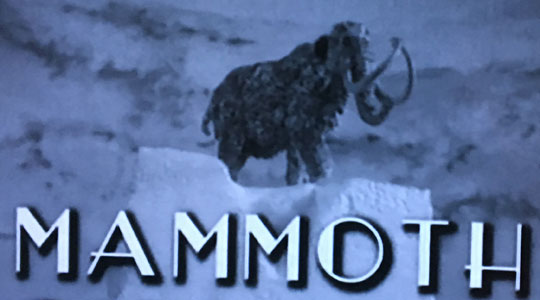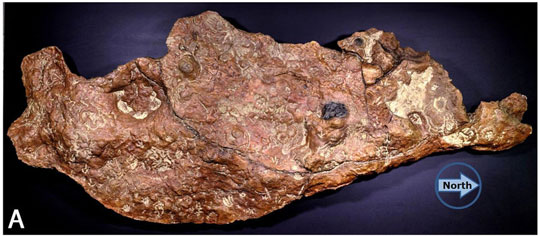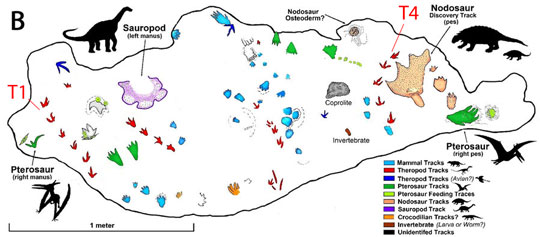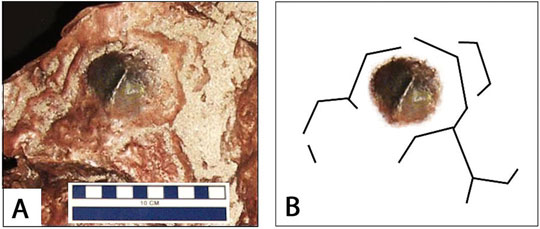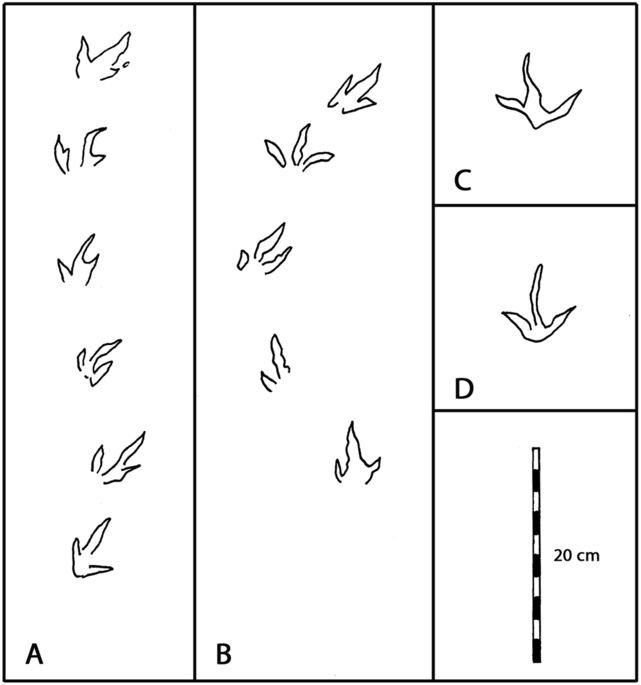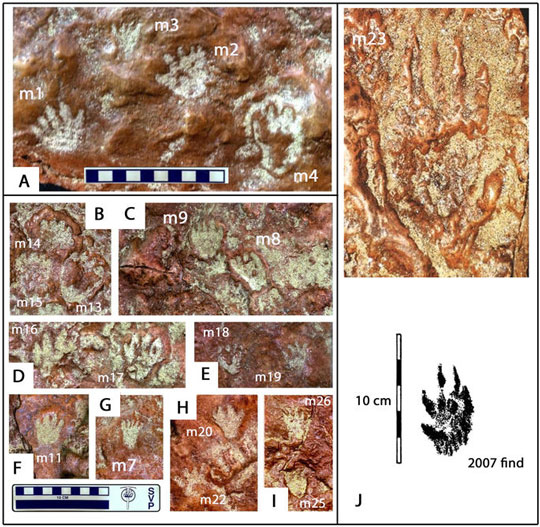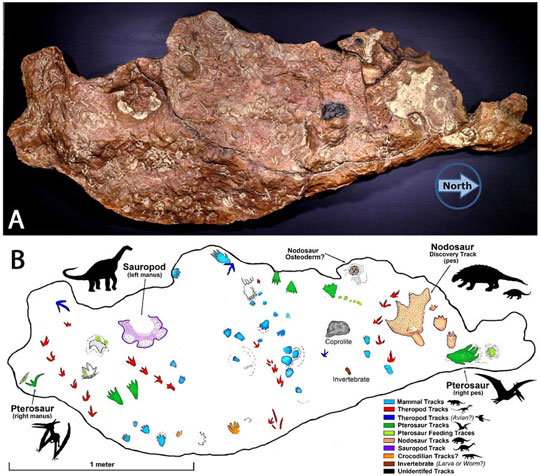New Schleich Prehistoric Animals (Summer 2018)
New Schleich Prehistoric Animals (Summer 2018)
Here are our first pictures of the second batch of Schleich prehistoric animal models to be released in 2018. Collectors and dinosaur fans will probably be aware that Everything Dinosaur has had in stock the January 2018 Schleich releases for some time, joining these figures are three new prehistoric animals, two dinosaurs and one flying reptile. The models are a juvenile Therizinosaurus, a juvenile Tyrannosaurus rex and a Pteranodon replica. All three models are expected to be in stock at Everything Dinosaur in July.
The New for 2018 Schleich Juvenile Therizinosaurus Model (Available July 2018)
Picture credit: Everything Dinosaur
Schleich Prehistoric Animal Models
This model is slightly smaller than the Therizinosaurus model with the red/black colour scheme that was introduced a few weeks ago, hence the juvenile moniker. Both the arms and the lower jaw are articulated (we think) and the body proportions are slightly different when compared to the adult Therizinosaurus. The sculpt gives the impression of feathers on the body and the blood-red colouration is quite striking. There is much more red on the juvenile figure when compared to the adult Therizinosaurus model (see below).
The Adult Therizinosaurus Dinosaur Model (Schleich)
The head shape and the blood-red colouration gives the Schleich juvenile Therizinosaurus a dragon-like quality.
Schleich Juvenile Tyrannosaurus rex
Also due out in the summer is a second juvenile figure, this time it is a juvenile Tyrannosaurus rex. When this new T. rex figure comes out (July 2018), it will become the third large, individual Tyrannosaurus rex model available in the Schleich range.
Available July 2018 The Schleich Juvenile Tyrannosaurus rex
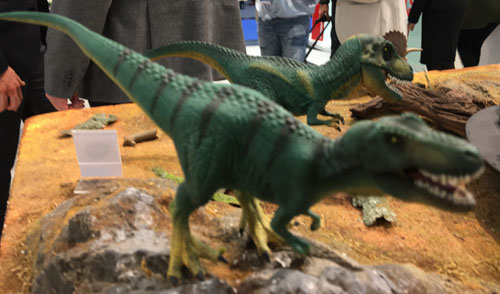
Picture credit: Everything Dinosaur
This is an interesting sculpt, as although it is very similar to the Schleich T. rex figure that came out last year, it does have a different skull shape and subtle differences in the paint scheme. For example, it has black vertical bands, perhaps to help hide this juvenile Tyrannosaurus rex from other apex predators such as larger members of its own kind or the fearsome, dromaeosaurid Dakotaraptor (D. steini). Recently, it has been proposed that tyrannosaurids may have lived in family groups, if they did, then this implies that they would have probably hunted as a pack.
For dinosaur models and prehistoric animal figures: Prehistoric Animal and Dinosaur Models.
A Dramatic Transformation
Palaeontologists know that as T. rex grew, it underwent a dramatic transformation. It changed from a relatively fleet-footed, long-legged animal into a robust, heavy-weight bruiser. Both types of T. rex model are depicted in the photograph above, the juvenile figure is in front of the larger adult model. These two figures could represent two tyrannosaurids in a family, a sub-adult and the larger, heavier fully-grown animal.
Each family member might have had a specialised role in hunting, the faster, more agile juveniles could pursue the intended victim, shepherding them to the large, fully-grown adults that were responsible for bringing the prey down.
Schleich Pteranodon Model (July 2018)
Team members at Everything Dinosaur remember the Pteranodon model with a blue coloured head crest that was part of the old “Saurus” range and was retired around a decade ago. Schleich are bringing back a large, individual Pteranodon model, but the new figure (available July 2018), is radically different.
The New for 2018 Schleich Pteranodon Model
Picture credit: Everything Dinosaur
Pteranodon and Schleich Prehistoric Animal Models
This flying reptile model continues the current Schleich leitmotif for bright and colourful figures. The model is posed as if it is flying and in the examples that we have seen, the painting around the head and that long beak is excellent. We do appreciate that this figure has a somewhat stylised appearance, but we don’t want to quibble as it seems particularly suitable for robust, creative play. Pteranodon remains one of the better-known members of the Pterosauria amongst young fans of ancient life, we suspect the popularity of Pteranodon may have influenced Schleich when it came to bringing back a Pteranodon model into its range.
A Close-up View of the New for 2018 Schleich Pteranodon Model
Picture credit: Everything Dinosaur
To view the current range of Schleich prehistoric animal models available from Everything Dinosaur, including all the early 2018 releases: Schleich Dinosaurs and Prehistoric Animals.
All three models are expected to be in stock around July 2018.
A spokesperson from Everything Dinosaur praised Schleich for their new models. Everything Dinosaur has an award-winning website. To visit Everything Dinosaur: Everything Dinosaur.


